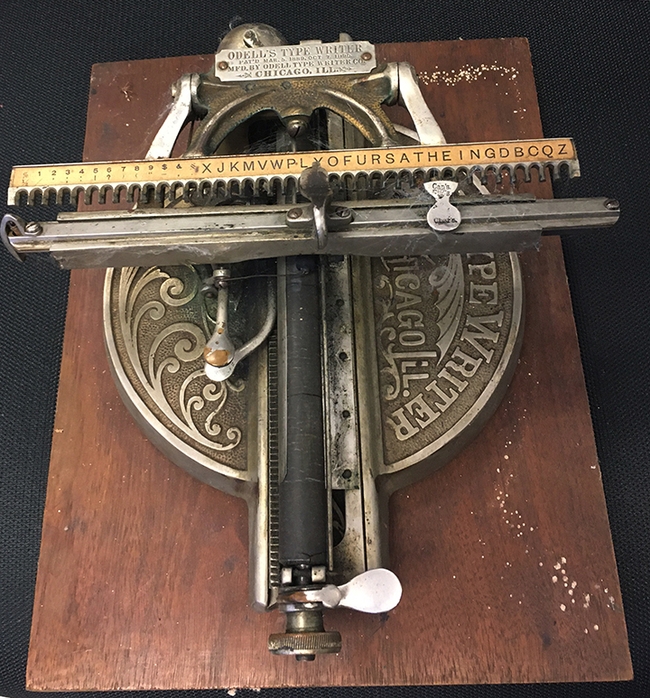
Make that 986 pages, equal to a four-inch-thick document.
No one visiting the Briggs Hall office of UC Davis distinguished professor Bruce Hammock can imagine that, either.
Hammock, who holds a joint appointment with the UC Davis Department of Entomology and Nematology and the UC Davis Comprehensive Center, inherited an “Odell's Type Writer,” patented in 1889 by inventor Levi Judson Odell (1855 - 1919), and the prized possession of his grandfather, Judge William Thomas Hammock (1866-1950) of Little Rock, Ark.
“This model is one of our nation's oldest linear index typewriters,” Hammock says. "It has no keyboard. It has a rail-type system with the characters spread out in a straight line--and not in alphabetical order, either. This is confusing compared to the modern-day QWERTY keyboard design, yet this instrument saved my grandfather's career.”
Not only did it save Judge Hammock's career, but Judge Hammock and his “type writer” inspired the development of Professor Hammock's 42-year career at UC Davis, which includes founding director of the UC Davis Superfund Research Program (SRP), funded by the National Institute of Environmental Health Sciences (NIEHS). Since 1987, the Hammock-directed program has brought in more than $90 million in grants to the UC Davis campus.
And fortunately, the 986-page grant renewal that the Hammock team submitted to NIEHS last year didn't involve the “back-up typewriter.”
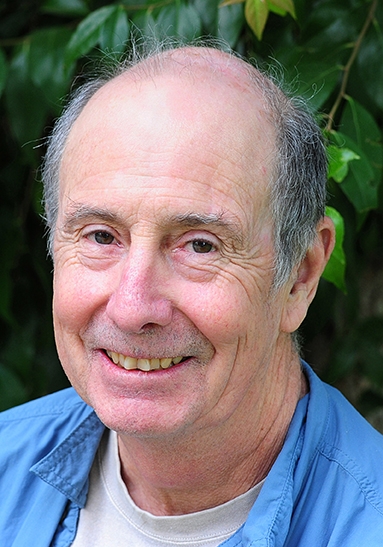
Has Hammock used it? Yes, but only once. "Yes, it worked, but I won't use it ever again. It is too old and fragile. And to use it, you need a strong arm to hit the keys, especially if you have multiple carbons. And you can't see what you're typing. A metal bar blocks your view.”
Hammock displays a 1915 newspaper clipping from The Arkansas Gazette showing his grandfather and daughter Maude working in the attorney's office. The Gazette claimed the Odell as the oldest such machine in the county--older than the one that newspaper rival The Arkansas Democrat touted.
“The oral history of the typewriter is that William Thomas Hammock was living in the country town of Quitman, Ark., in 1893 and had just passed the bar," the UC Davis professor related. "Being a new attorney with no business and lots of spare time, he jumped at a $150 contract to make a copy of the county's handwritten laws and regulations. Not being an experienced lawyer, he failed to read the fine print. The county wanted not one, but 10 handwritten copies. This was impossible on his budget.”
“Then he heard about something called a ‘type writer.' He boarded a train to Chicago, where the Odell type writer company had just relocated from Wisconsin, checked out the machine, and bought it for about $15. This invention permitted him to use carbons and he only needed to type the documents twice, with multiple carbons.”
You had to be strong to operate the machine. "The number of carbon copies that can be made with the Odell is limited only by the strength of the operator's right arm," according to The Arkansas Gazette article. "Mr. Hammock took setting up exercises each morning and made 10 copies at a time. After a couple of months, he was as husky as a blacksmith and had earned $150. Mr. Hammock became quite proficient in handling the machine. He could pound out a line of legal phraseology much quicker than his forebears could chisel out a love message on stone or parchment, though the physical effort was about the same."
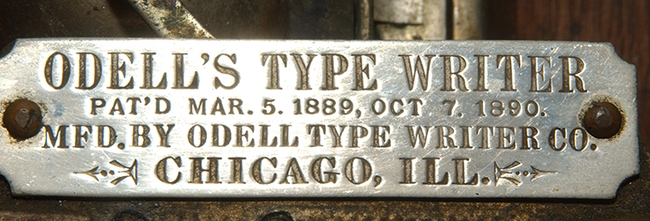
Hammock, widely known for his groundbreaking research in insect physiology, toxicology, pharmacology, and experimental therapeutics, joined the UC Davis faculty in 1980 from UC Riverside. He remembers typing grants on typewriters—pounding the keys, sliding the carriage return, and hearing the familiar ding. “For most work, I had an upright Remington at that time. The transition to computers started with magnetic card machines when I was at UC Riverside. When I joined the UC Davis faculty, I bought a PDP 1123 computer with Ted Wilson, a research scientist in the department, and we converted the text editor into a word processor and allowed people in the department to join our self-designed network for free. In some ways, it worked better than the current word processors.”
“Just as this new technology of the Odell type writer saved my granddad's career as a lawyer, this adapted word processor on the rather ‘Dr. Who-ish' PDP computer changed my career at UC Davis when we received that NIEHS grant in 1987 to establish the UC Davis Superfund Research Program. It's now the longest running Superfund Program in the country.”
The Hammock-directed program encompasses five projects and six cores, spread throughout most of the colleges, and involving more than 12 departments, eight labs and 35 personnel, as well as several dozen undergraduate and graduate students and collaborators. In addition to the grant funding, the SRP receives supplemental funding for multiple training, equity and outreach projects. The 2021-22 budget? A little over $2.6 million.
“We have addressed multiple problems in California ranging from the clean-up of the Mare Island Naval Shipyard through the MTBE (methyl tertiary-butyl ether) groundwater crisis to now helping the Yurok Nation in Northern California deal with environmental contamination,” Hammock said. “To compete for centers, program projects and training grants, we need not only good science but also the administrative infrastructure to put together proposals.”
Recalling his initial application for the federal grant, Hammock commented that “the opportunity for a large interdisciplinary grant with a very short time line arose from NIEHS. Applicants had to put together engineers, soil chemists, toxicologists, medical doctors and veterinarians in an integrated project on a short time line.”
“We never could have pulled this off without the technology of a word processor,” Hammock said, “or without a wonderful department staff. Having the administrative staff, in this case Dee Dee Kitterman and the word processing technology of the PDP, made the difference. The renewal that went in this year was 986 pages! It makes you appreciate the collaborative nature of the science at Davis, the quality of the science, and particularly the administrative structure that supports it. We would not compete without the modern-day equivalents of the Odell Type Writer and the professionals who make our equipment sing.”
“Administrative staff are crucial,” Hammock said. “They should be appreciated all year around, not just on a single day (Administrative Professionals Day is April 27). And to think that in the past, our administrative professionals--then known as secretaries--faced these challenges with such formidable equipment as Odell's Type Writer and won.”
Attached Images:
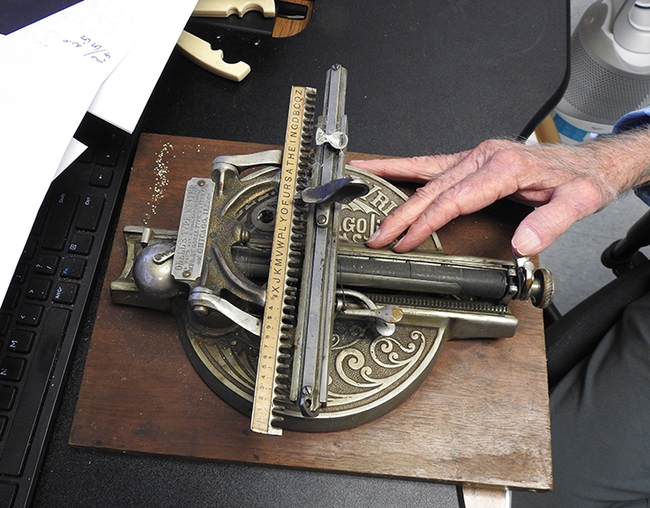
A hand of UC Davis distinguished professor Bruce Hammock rests on the Odell "type writer." (Photo by Kathy Keatley Garvey)
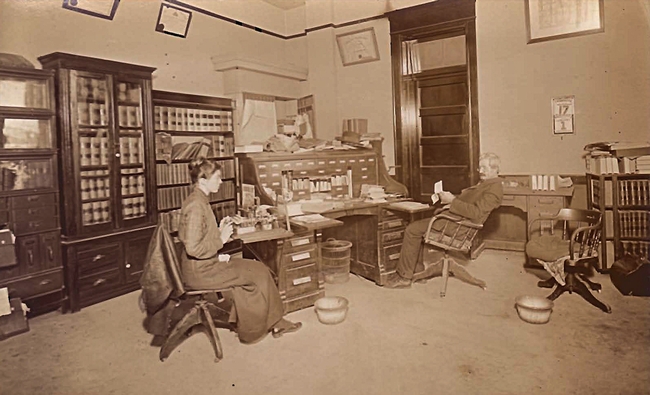
This image, taken in 1915, shows Judge William Thomas Hammock and daughter Maude working in his office. She is using the Odell "Type Writer.' They are the grandfather and aunt of UC Davis distinguished professor Bruce Hammock.
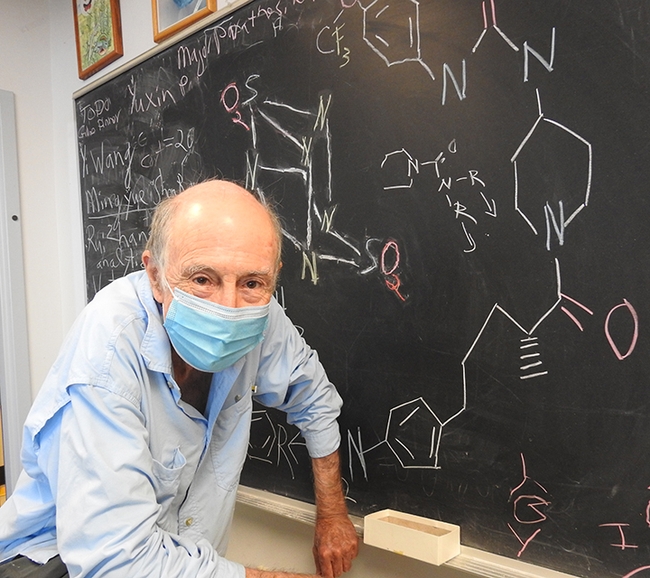
A chalkboard details some of the work that UC Davis distinguished professor Bruce Hammock is doing. (Photo by Kathy Keatley Garvey)